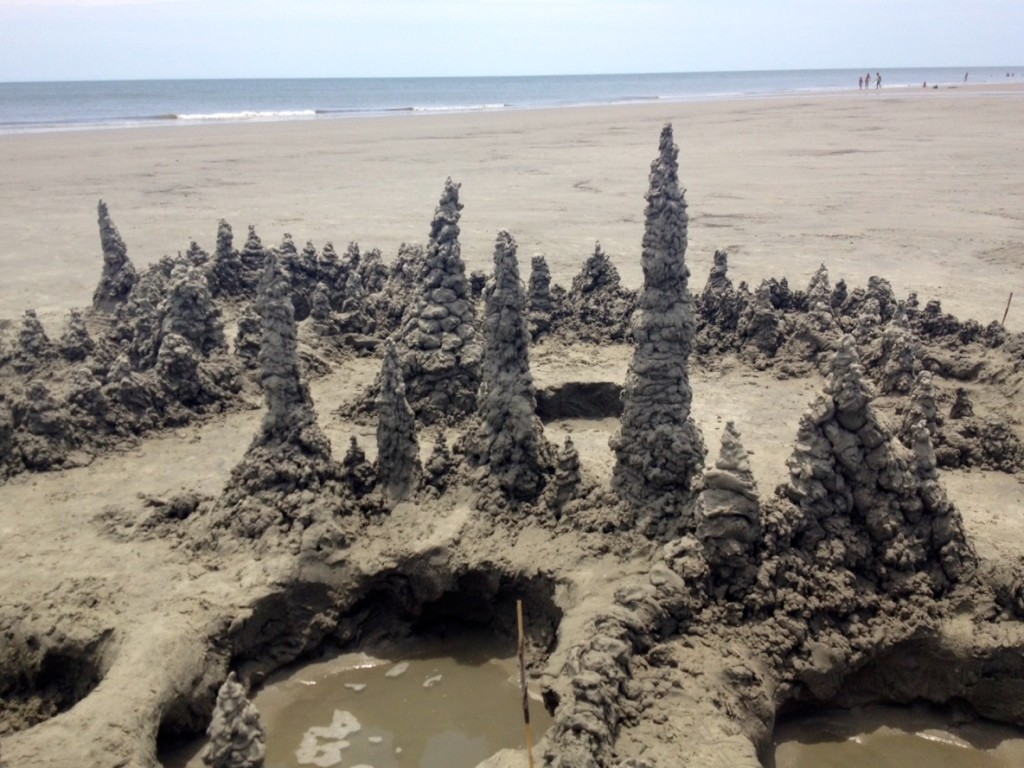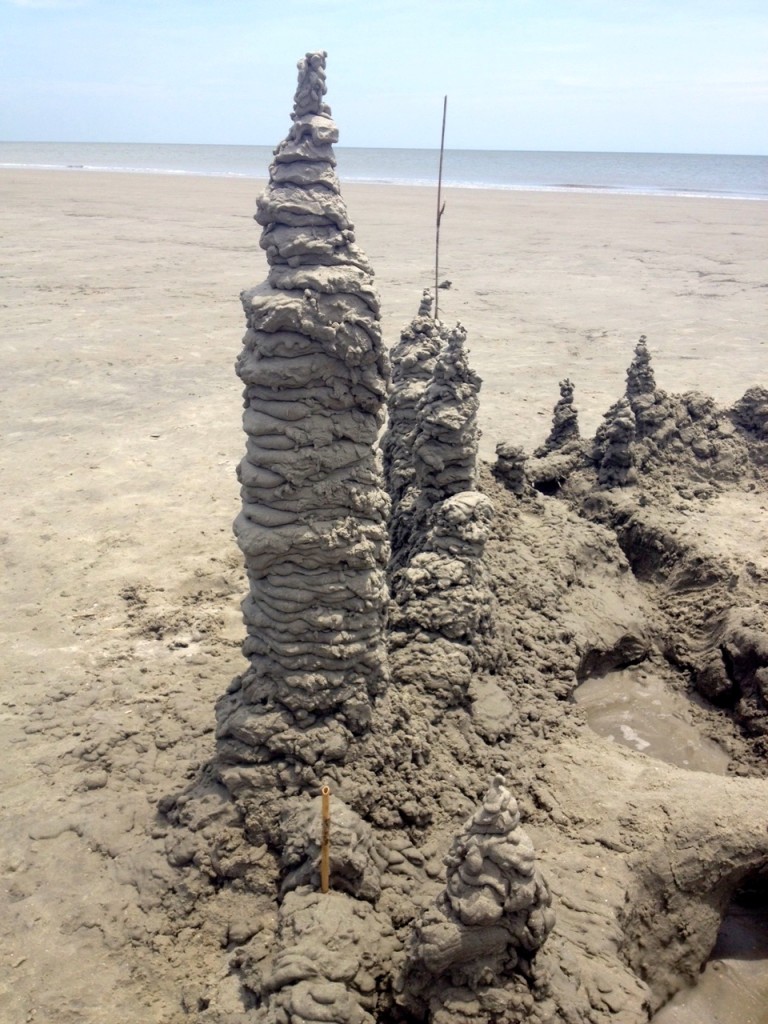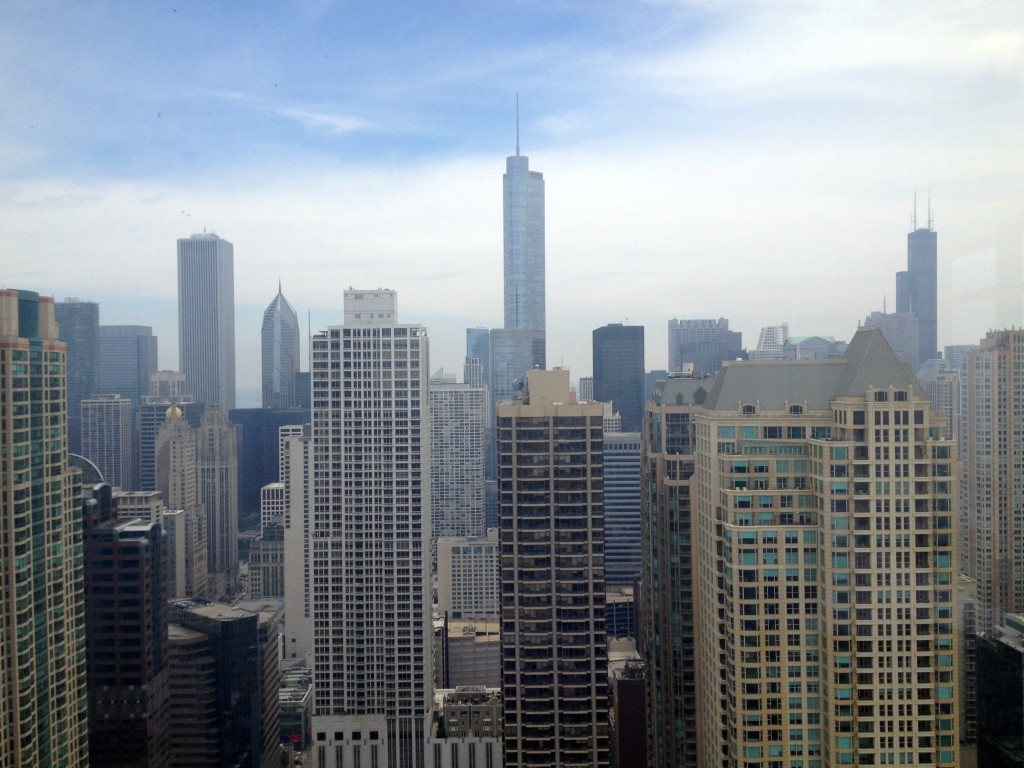 “The story of architecture,” writes Jonathan Glancey in his book The Story of Architecture, “is one of remarkable human endeavor…[a]t its best…it lifts our spirits and sends shivers down our spines…”*
“The story of architecture,” writes Jonathan Glancey in his book The Story of Architecture, “is one of remarkable human endeavor…[a]t its best…it lifts our spirits and sends shivers down our spines…”*
Chicago, world renowned for its architecture and considered the birthplace of the modern skyscraper, has its own unique story, which is delightfully told by professionally trained docents on the Chicago Architecture Foundation River Cruise, a spirit and eye lifting adventure for the rich history lessons it offers.
The docents (certified tour guides) interpret more than fifty buildings along the Chicago River, revealing how the city grew from a small backcountry outpost into one of the world’s most important crossroads in less than 100 years.
On the tour one learns about the Great Chicago Fire of 1871 that destroyed 17,000 wooden structures, killed 300 people, and left over 100,000 people homeless. Although the true cause has never been determined (a cow kicking over a lantern in a barn is a myth), it was out of the ashes of the fire that the modern city and skyscraper emerged with iron and steel framed buildings replacing wood as the safer and stronger material of choice.
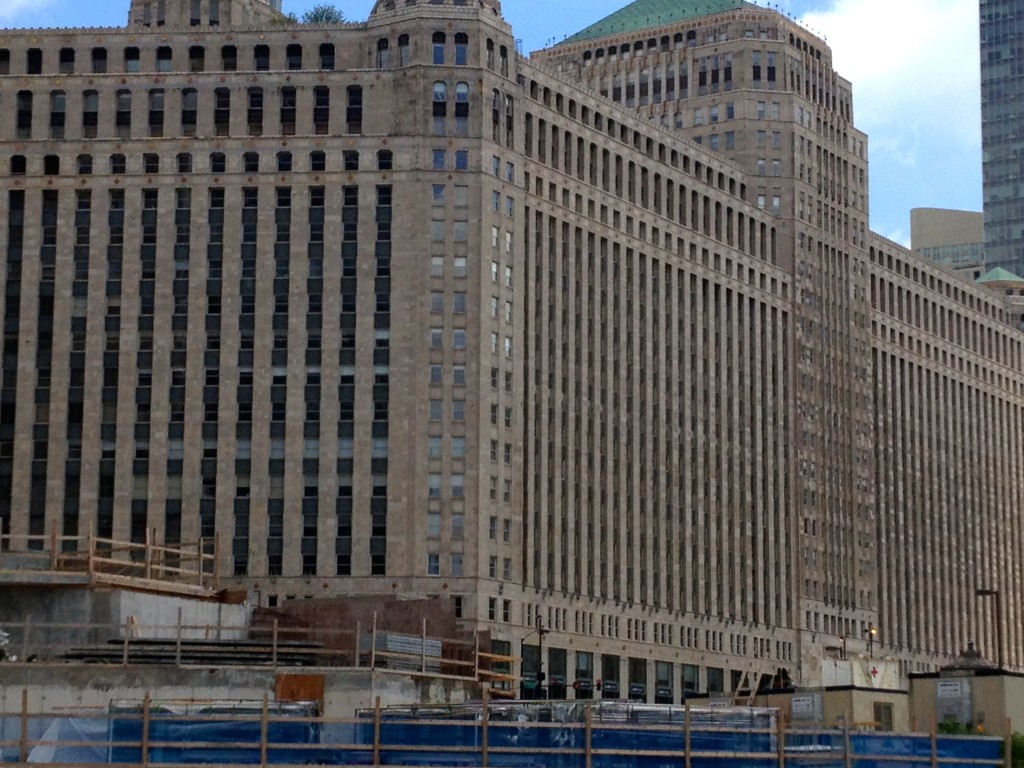
One also learns that there was the “First Chicago School” of architecture established in the 1880’s and led by William Le Baron Jenney**, known as the “Father of the American Skyscraper”, which became a training ground for leading architects, including Daniel Burnham (the featured architect in Erik Larson’s bestselling book, Devil in the White City). It would later give way to the “Second Chicago School” from 1940-1975, led by Ludwig Mies van der Rohe (most people would know the Seagrams building in NYC as one of his designs).
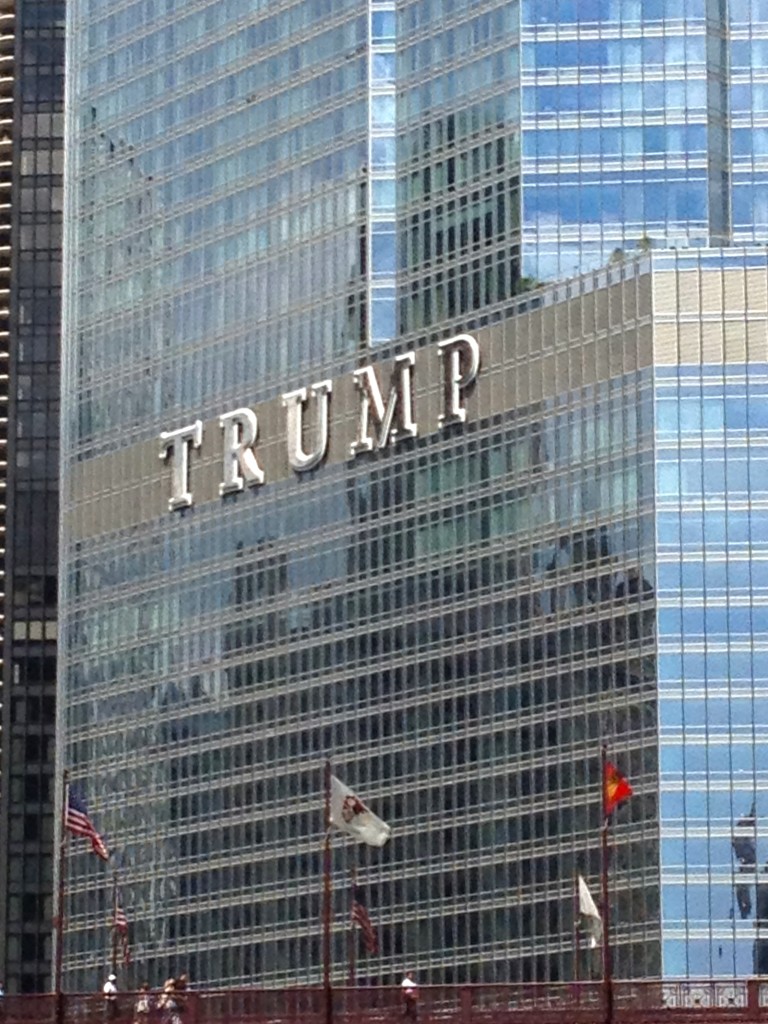 Chicago’s Carbide and Carbon building (now known as the Hard Rock Hotel or champagne building; see here), designed by Burnham in the 1920s, remains one of my favorite buildings in the city, resembling a champagne bottle with a green tinted terra cotta façade and a 24 carat gold leaf top that speaks to the exuberance and the glamor of the gilded “roaring 20’s.”
Chicago’s Carbide and Carbon building (now known as the Hard Rock Hotel or champagne building; see here), designed by Burnham in the 1920s, remains one of my favorite buildings in the city, resembling a champagne bottle with a green tinted terra cotta façade and a 24 carat gold leaf top that speaks to the exuberance and the glamor of the gilded “roaring 20’s.”
Such a design is characteristic of the “Art Deco”, or “applied decoration”, time period (1925-1940), a style of architecture that represented scientific progress alongside the power and growth of capitalism. (Other well-known examples of “Art Deco” are in NYC, i.e. The Radio City Music Hall, Chrysler Building, Empire State Building, McGraw Hill Building, Rockefeller Center).
The Merchandise Mart – considered a Chicago icon from the 1920s – is another “Art Deco” building, characterized by vertical lines and geometric shapes. At the time, it was America’s largest building with four million square feet covering two square blocks. Developed by the Marshall Field & Co. of the famous Chicago department store Marshall & Fields for forty million dollars right before the depression, it ended up going into bankruptcy and was purchased by Joseph P. Kennedy in 1945 for a bargain of seventeen million which he eventually sold for more than four hundred million dollars(!)

Speaking of millions, The (“Donald for President”) Trump International Hotel & Tower located near the DuSable Bridge was another of my favorite buildings along the river, with its three-tiered reflective glass structure evoking “a ship of commerce steaming through the city.”
Representative of the architectural style “Contextualism”, which designs structures to fit into their cultural, architectural and environmental surroundings, The Trump Tower opened in 2008 and was designed by the world renowned architect Adrian Smith of the Chicago firm Skidmore Owings & Merrill (SOM) (Note: Smith also designed “Burj Khalifa” in Dubai, the world’s tallest building that will soon be beat by his “Kingdom Tower” upon completion in 2018). As of 2014, the tower – which includes a five-star rated hotel, a Michelin rated restaurant, “Sixteen”, retail shops and luxury condominiums – is the sixteenth tallest building in the world.
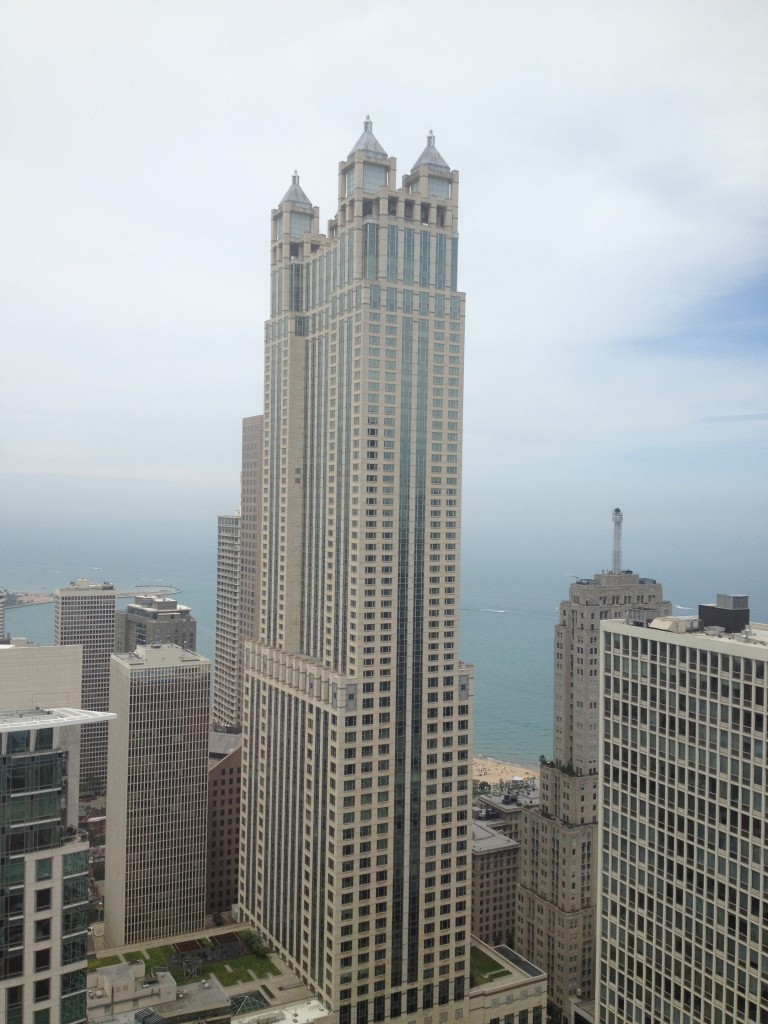
The tour didn’t stop there. There was also the “post-modern” 333 Wacker Building, designed by Kohn Pedersen Fox and ranked as one of Chicago’s favorite buildings for its reflective blue/green façade that mimics the color of the river and reflects other city buildings similar to Millennial Park’s “Cloud Gate”, curving with the river and changing colors as the sun and clouds shift throughout the day.
Far from last, and of no less significance, is the Aqua Tower (see here), completed in 2009 with a modern design by Jeanne Gang, founder of The Studio Gang firm. Her first ever attempt at skyscrapers, she was the first woman to receive an award for her design; she also holds the title for the highest skyscraper designed by a woman! Viewed from the river, the curvy wave-like forms of the balconies attached to the rectangular box-like structure creates an “undulating landscape of bending, flowing concrete as if the wind were blowing ripples across the surface of the building” (quote taken from The New Yorker, Feb. 2010).
The docent on our tour encouraged a different and more thrilling perspective of “Aqua” by standing street level and looking up.
And so…LOOK UP! The next time you visit a city, lift your eyes from the visual enticements of the street, skyward to the order and symmetry, design and decoration above, to the arches, balconies, buttresses, columns, cornices, cupolas, domes, facades, finials, gargoyles, friezes, moldings and reliefs that are, as Johann Wolfgang von Goethe once wrote, “suspended like frozen music.”
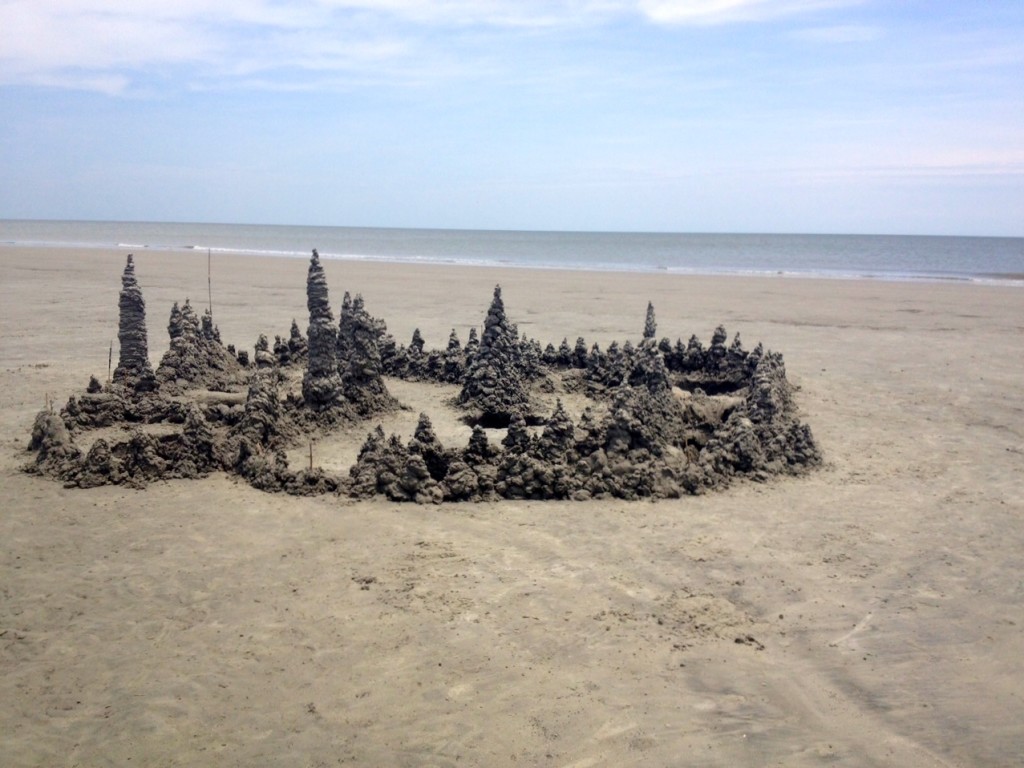
And to complete a perfect day in Chicago…
Keep your eyes lifted after the river cruise as you make your way to the Art Institute of Chicago. Take in a different perspective of some of the buildings you learned about as you walk along Michigan Avenue to the Institute’s Beaux-Arts style building, designed in 1879 by Shepley, Rutan and Coolidge of Boston and which houses over 300,000 works of art.
Voted the number one museum in the world in 2014, it is known for its extensive Impressionist collection. It is a pleasure, once inside, to take in the beauty of the interior itself, which has had several expansions over the years, most recently the Modern Wing in 2009.

*Jonathan Glancey writes in his book: “It is significant that in monotheist religions (notably Christianity), God has been referred to as the great and original Architect…how important architecture has been to our lives and how distinct it is from building. Architecture has always been something of a religion and architects a kind of priesthood. At their best…they have been like shamans or magicians tricking stone, brick, and marble, iron, steel, titanium, and polycarbonates into sensational structures that raise our spirits above everyday concerns.”
**William Le Baron Jenney was born in 1832 Massachusetts and received his formal education at Phillips Academy in Andover, MA and later at the Lawrence Scientific School at Harvard. After leaving Harvard, he traveled to Paris to attend the Ecole Centrale des Arts et Manufactures, where he graduated a year after his fellow student Gustave Eiffel who went on to design the Eiffel Tower in 1889. Jenney returned to the United States in 1861 and joined the Union Army in the Civil War, where he served as an engineering officer designing fortifications for Generals Sherman and Grant.
